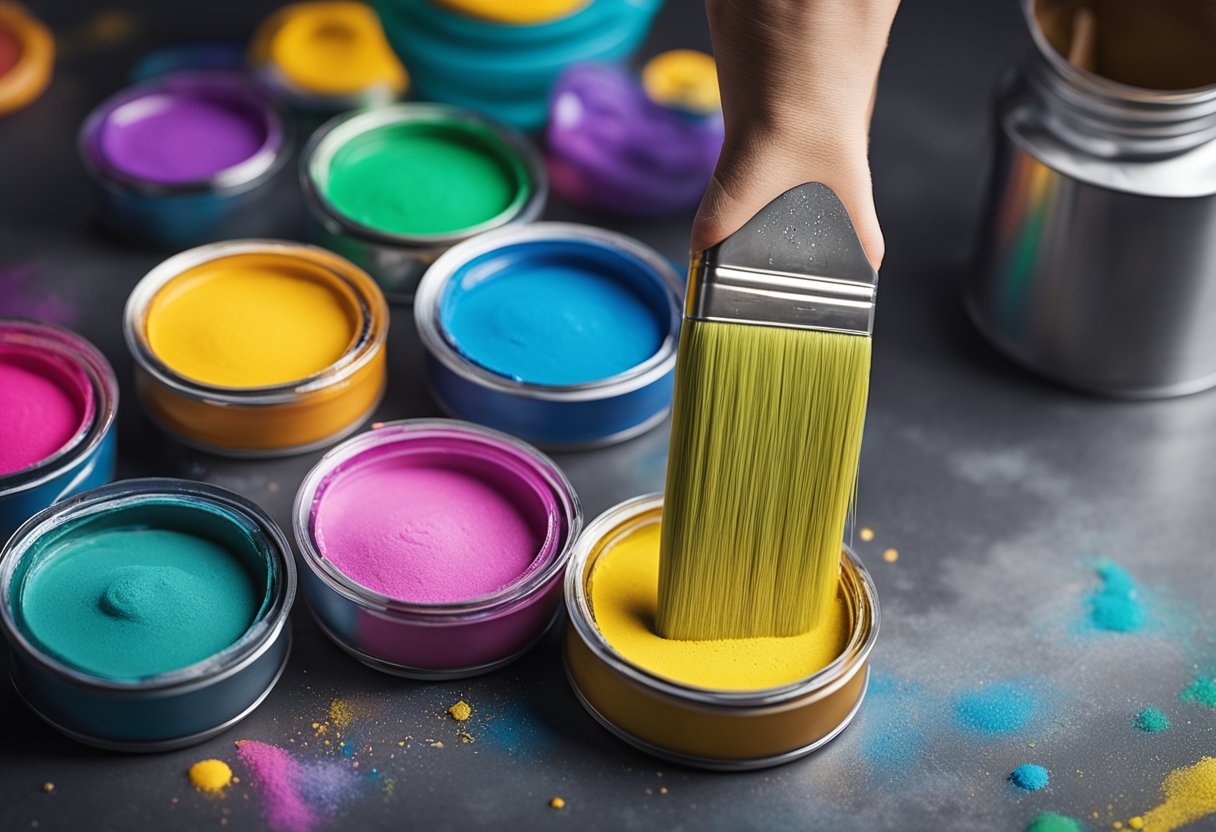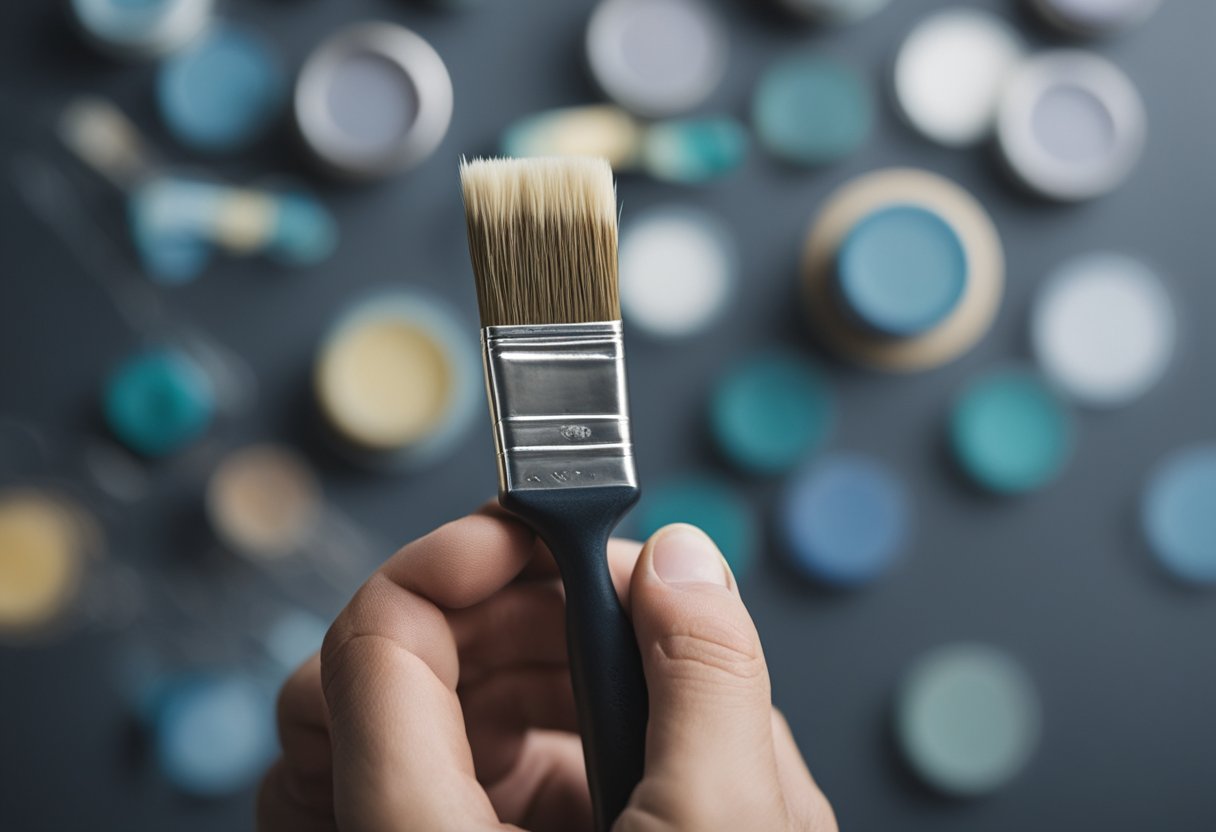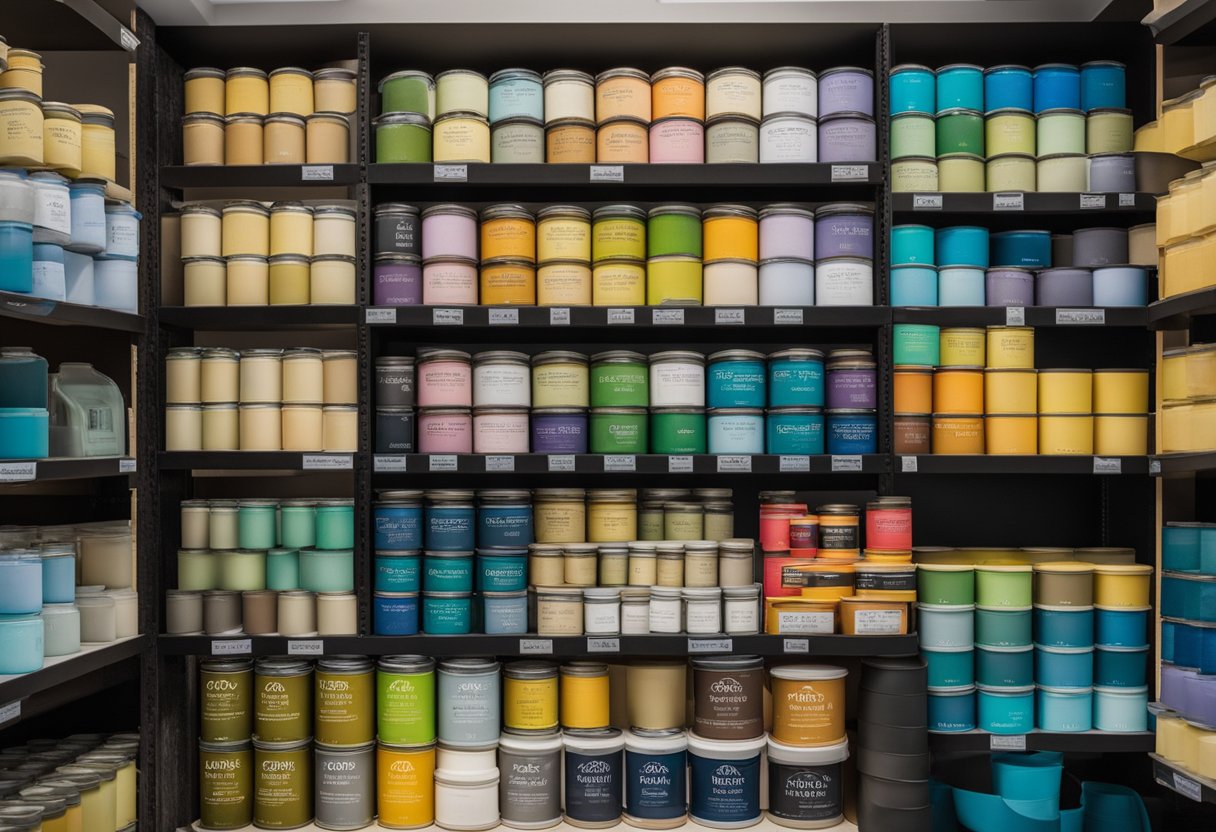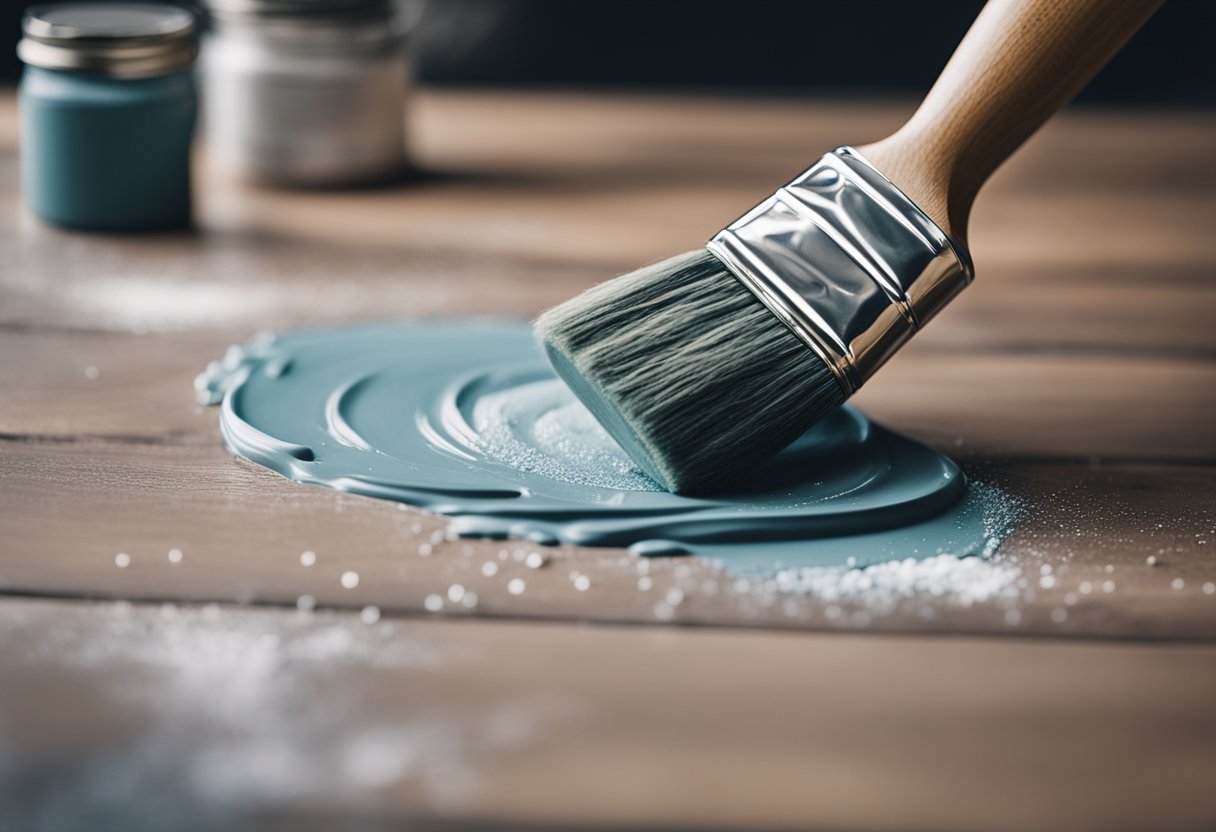I have always been a fan of chalk paint for its ability to transform furniture into a shabby chic or vintage look. Recently, I have been curious about using chalk paint on plastic surfaces. After doing some research, I found that chalk paint can adhere to plastic with proper preparation and techniques.
Understanding Chalk Paint
Chalk paint is a versatile paint that can be used on a wide range of surfaces, including plastic. It is popular for its matte finish and ability to create a vintage, shabby-chic look. Unlike traditional paints, chalk paint does not require sanding or priming beforehand and dries quickly. It is available in various colors, allowing you to create various looks and finishes on your plastic surfaces.
Preparation of Plastic for Chalk Paint
Before applying chalk paint on plastic, it is important to clean the surface thoroughly and use a primer specifically designed for plastic. This will help the paint adhere better and ensure a long-lasting finish. It is also essential to choose the right type of plastic surface, as some plastics may not be suitable for chalk paint. With proper preparation and techniques, chalk paint can adhere to plastic surfaces and create a beautiful finish.
Key Takeaways
- Chalk paint can be used on plastic surfaces with proper preparation and techniques.
- It is important to clean the surface thoroughly and use a primer specifically designed for plastic before applying chalk paint.
- With proper preparation and techniques, chalk paint can adhere to plastic surfaces and create a beautiful finish.
Understanding Chalk Paint
https://www.youtube.com/watch?v=aDNtDxVgrTk&embed=true
As someone who has used chalk paint on various surfaces, I can say that it is a unique type of paint that has become increasingly popular in recent years. Chalk paint is known for its ability to stick to almost any type of surface, including plastic. One of the reasons why people love chalk paint is its versatility. You can use it to create a vintage, shabby chic look or a more modern, sleek finish.
Chalk paint is a water-based paint that contains calcium carbonate, which gives it a chalky texture. It is available in a variety of colors, and you can even mix colors to create your own custom shade. One of the benefits of chalk paint is that it dries quickly, which means you can complete a project in a shorter amount of time.
When it comes to price, chalk paint can be more expensive than traditional paint. However, it is important to keep in mind that a little bit of chalk paint goes a long way. You can use a small amount of paint to cover a large surface area, which means you may not need as much paint as you would with traditional paint.
One of the most notable characteristics of chalk paint is its matte finish. This finish is perfect for creating a vintage or shabby chic look. However, if you prefer a glossy finish, you can apply a wax or sealant to the surface after the paint has dried.
In summary, chalk paint is a versatile, unique type of paint that can be used on a variety of surfaces, including plastic. It is available in a range of colors, and its matte finish is perfect for creating a vintage or shabby chic look. While it may be more expensive than traditional paint, a little bit of chalk paint goes a long way, making it a cost-effective option for DIY projects.
Preparation of Plastic for Chalk Paint
https://www.youtube.com/watch?v=76eOxYAq1Ic&embed=true
As a professional painter, I have found that the key to getting the best results when using chalk paint on plastic is to properly prepare the surface beforehand. In this section, I will discuss the two main steps that are involved in preparing plastic for chalk paint.
Cleaning the Surface
Before you start painting, you need to make sure that the plastic surface is clean and free of any dirt or debris. This is important because any dirt or debris on the surface can prevent the paint from adhering properly, which can result in an uneven finish.
To clean the plastic surface, I recommend using a mild detergent or all-purpose cleaner and a soft cloth or sponge. You should gently scrub the surface to remove any dirt, dust, or grease. After cleaning, be sure to rinse the surface with water and allow it to dry completely before moving on to the next step.
Sanding the Surface
Once the plastic surface is clean and dry, the next step is to sand it using fine-grit sandpaper. Sanding the surface helps to roughen it up and create a better surface for the chalk paint to adhere to. This process is particularly important for smooth plastic surfaces, as they tend to be less receptive to paint.
When sanding the surface, I recommend using a fine-grit sandpaper with a grit of around 220. You should sand the surface lightly and evenly, being careful not to sand too hard or too much in one spot. After sanding, be sure to clean the surface again to remove any dust or debris before moving on to the next step.
By following these two simple steps, you can ensure that your plastic surface is properly prepared for chalk paint. This will help to ensure that the paint adheres properly and that you get a smooth, even finish.
Application of Chalk Paint on Plastic
https://www.youtube.com/watch?v=C_VaIuRIkrM&embed=true
Chalk paint is a popular choice for DIY projects because of its versatility and ease of use. Applying chalk paint on plastic is no exception. In this section, I will guide you through the process of applying chalk paint on plastic.
Priming the Surface
Before applying chalk paint on plastic, it is essential to prepare the surface properly. Plastic is non-porous, which means it does not allow penetration. Therefore, it is crucial to use a primer that is specifically designed for plastic surfaces. A primer can help improve the adhesion of chalk paint to the plastic surface. Look for a primer that is compatible with both plastic and chalk paint. Apply a thin, even layer of primer to the surface, following the manufacturer’s instructions. Allow the primer to dry completely before proceeding.
Painting Process
After the primer has dried, we can begin the painting process. There are several tools you can use to apply chalk paint on plastic, such as a brush, roller, or sprayer. A paintbrush is the most common tool used to apply chalk paint on plastic. When using a paintbrush, it is crucial to apply even coats with thin layers. This technique will prevent brush strokes and ensure that the paint dries evenly.
Applying Multiple Layers
Depending on the desired finish, you may need to apply multiple layers of chalk paint. Applying multiple layers can help achieve a more opaque finish. It is essential to allow each layer to dry completely before applying the next one. Applying multiple layers can also help increase the durability of the paint.
In conclusion, applying chalk paint on plastic is a simple process that requires proper preparation and technique. By following the steps outlined above, you can achieve a beautiful and long-lasting finish on your plastic surfaces.
Finishing and Sealing
https://www.youtube.com/watch?v=DnMTAh2c0e0&embed=true
Once you have applied the chalk paint to your plastic surface, it is essential to finish and seal it properly to ensure a long-lasting finish. In this section, I will discuss the two most common methods of finishing and sealing chalk paint on plastic.
Applying Wax or Sealant
One of the most popular methods of finishing chalk paint on plastic is by applying wax or sealant. Chalk paint wax is a type of clear topcoat that is specifically designed to protect chalk paint from scratches, stains, and other types of damage. It also gives the paint a smooth and polished look.
To apply chalk paint wax, first, make sure that the paint is completely dry. Then, using a clean cloth, apply a thin layer of wax over the entire surface. Make sure to work the wax into the paint, using circular motions. Once you have covered the entire surface, let the wax dry for at least 24 hours. After that, use a clean cloth to buff the surface, removing any excess wax.
Another option is to use a sealant instead of wax. A sealant is a clear topcoat that is designed to protect the paint from damage. Polyurethane is a common type of sealant that works well with chalk paint. To apply polyurethane, first, make sure that the paint is completely dry. Then, using a brush or roller, apply a thin layer of polyurethane over the entire surface. Make sure to work the sealant into the paint, using long strokes. Once you have covered the entire surface, let the sealant dry for at least 24 hours.
Curing Process
After you have applied the wax or sealant, the curing process is essential to ensure a long-lasting finish. The curing process is the amount of time that it takes for the wax or sealant to fully harden and bond with the paint. During this time, it is crucial to avoid using the surface, as it can cause damage to the finish.
The curing time can vary depending on the type of wax or sealant that you have used. Generally, it takes about 24 to 48 hours for the wax or sealant to cure fully. However, it is essential to follow the manufacturer’s instructions for the specific product that you have used.
In conclusion, finishing and sealing chalk paint on plastic is an essential step to ensure a long-lasting finish. Applying wax or sealant and allowing it to cure properly will protect the paint from damage and give it a smooth and polished look.
Chalk Paint on Different Plastic Surfaces
https://www.youtube.com/watch?v=ZJn4lhRuDEA&embed=true
When it comes to painting plastic surfaces with chalk paint, it is important to choose the right type of plastic and prepare it properly before applying the paint. In this section, I will cover the different types of plastic surfaces that can be painted with chalk paint and provide some tips on how to achieve the best results.
Chalk Paint on Plastic Furniture
Chalk paint can be used to transform plastic furniture, such as chairs, tables, and plant pots. Before painting, it is important to clean the surface thoroughly with a mild detergent and water. For best results, it is recommended to use a primer specifically designed for plastic surfaces. This will help the paint adhere better and ensure a long-lasting finish.
Chalk Paint on Plastic Containers
Plastic containers, such as storage bins and baskets, can also be painted with chalk paint. Before painting, it is important to clean the surface thoroughly and remove any dirt or grime that may prevent the paint from adhering properly. It is recommended to use a primer specifically designed for plastic surfaces. This will help the paint adhere better and ensure a long-lasting finish.
Chalk Paint on Plastic Decorative Items
Chalk paint can be used to transform plastic decorative items, such as picture frames and home decor. Before painting, it is important to clean the surface thoroughly with a mild detergent and water. For best results, it is recommended to use a primer specifically designed for plastic surfaces. This will help the paint adhere better and ensure a long-lasting finish.
In conclusion, chalk paint can be used to transform a variety of plastic surfaces, including furniture, containers, and decorative items. However, it is important to choose the right type of plastic and prepare it properly before applying the paint. By following these tips, you can achieve a beautiful and long-lasting finish that will enhance the look of your home decor.
Troubleshooting Common Issues
Chalk paint for plastic is a great way to transform old or boring plastic items into unique and stylish pieces. However, like any painting project, there can be some common issues that arise during the process. Here are some troubleshooting tips for dealing with common issues:
Dealing with Scratches and Imperfections
One of the biggest challenges when using chalk paint on plastic is dealing with scratches and imperfections. These can be caused by a variety of factors, including improper surface preparation or using the wrong type of paint. To fix these issues, start by sanding the surface with medium-grit sandpaper to smooth out any bumps or scratches. Then, use a plastic-friendly primer to create a smooth base for the chalk paint to adhere to. Finally, apply the chalk paint in thin, even coats, allowing each coat to dry completely before applying the next.
Addressing Adhesion Problems
Another common issue when using chalk paint on plastic is poor adhesion. This can be caused by a variety of factors, including using the wrong type of paint or not properly preparing the surface. To improve adhesion, start by thoroughly cleaning the surface with a mild detergent or all-purpose cleaner and a soft cloth or sponge. Then, use a plastic-friendly primer to create a smooth base for the chalk paint to adhere to. Finally, apply the chalk paint in thin, even coats, allowing each coat to dry completely before applying the next.
Managing Drying Time and Temperature
The drying time and temperature can also be important factors when using chalk paint on plastic. If the temperature is too high or too low, the paint may not dry properly, resulting in a tacky or uneven finish. To avoid this issue, try to paint in a room that is between 60-80 degrees Fahrenheit and has low humidity. Additionally, make sure to allow each coat of paint to dry completely before applying the next, as this will help ensure a smooth and even finish.
By following these troubleshooting tips, you can help ensure a successful chalk paint project on plastic. Remember to take your time and be patient, as this will help ensure the best possible results.
Comparing Chalk Paint Brands
When it comes to painting plastic with chalk paint, there are several brands to choose from. In this section, I will compare some of the most popular chalk paint brands for plastic and highlight their features, pros, and cons.
Budget Options
If you’re looking for an affordable option, FolkArt Home Decor Chalk Paint is a great choice. It is a water-based paint that is easy to use and dries quickly. One of the best things about this paint is that it comes in a wide range of colors, making it easy to find the perfect shade for your project. However, it may require multiple coats to achieve full coverage, and the finish may not be as durable as some of the higher-end options.
High-End Options
For a more high-end option, Rust-Oleum Chalked Paint is a great choice. This paint is specifically designed for furniture and can be used on plastic as well. It has a creamy consistency that makes it easy to apply and dries to a smooth, matte finish. It is also very durable and can withstand wear and tear. However, it is a bit more expensive than some of the other options on the market.
In conclusion, when it comes to choosing a chalk paint for plastic, there are many options to choose from. Whether you’re looking for a budget-friendly option or a high-end paint, there is a brand out there that will meet your needs.
Step-by-Step DIY Chalk Paint Projects
As a DIYer, I love using chalk paint to transform plastic items into something new and beautiful. With just a few simple steps, you can create your own unique pieces that will add character and charm to any room in your home.
Here are some step-by-step instructions for creating your own DIY chalk paint projects:
-
Prep the surface: Before painting, make sure the surface is clean and free of any dirt or debris. If necessary, sand the surface lightly to help the paint adhere better.
-
Mix the chalk paint: Mix equal parts of your favorite color of latex paint and unsanded grout in a container. Stir until the mixture is smooth and free of lumps.
-
Apply the first coat: Using a brush or roller, apply the first coat of chalk paint to the surface. Let it dry completely before applying the second coat.
-
Apply the second coat: Apply the second coat of chalk paint, making sure to cover any areas that were missed in the first coat. Let it dry completely.
-
Sand the surface: Once the paint is dry, lightly sand the surface with a fine-grit sandpaper to give it a smooth, matte finish.
-
Seal the paint: To protect the paint and make it more durable, apply a clear wax or polyurethane sealant to the surface.
Now that you know how to create your own DIY chalk paint, here are some fun and easy projects to try:
-
Chalkboard planters: Paint plastic planters with chalk paint and use chalk to label the plants you’re growing.
-
Picture frames: Add a pop of color to old plastic picture frames by painting them with chalk paint.
-
Decorative bowls: Transform plain plastic bowls into decorative pieces by painting them with chalk paint and adding stenciled designs.
With these simple steps and DIY projects, you can easily create your own unique chalk paint pieces that will add charm and character to any room in your home.
Frequently Asked Questions
What are some best chalk paint options for outdoor furniture?
When it comes to painting outdoor furniture, it’s crucial to choose the right type of paint that can withstand harsh weather conditions. Some of the best chalk paint options for outdoor furniture are Rust-Oleum Chalked Ultra Matte Paint, Krylon Chalky Finish Paint, and Americana Decor Chalky Finish Paint. These paints are specifically designed for outdoor use and can provide long-lasting protection to your furniture.
How can you seal chalk paint on plastic?
Sealing chalk paint on plastic is essential to protect the paint from chipping and peeling. One of the best ways to seal chalk paint on plastic is to use a clear wax. Apply a thin layer of wax using a soft cloth and let it dry for a few hours. Once the wax has dried, buff the surface with a clean cloth to create a smooth and shiny finish.
Can you use chalk paint on plastic pots?
Yes, you can use chalk paint on plastic pots. However, it’s important to prepare the surface properly before painting. Clean the pot thoroughly and sand it lightly to create a rough surface that the paint can adhere to. Apply a primer designed for plastic surfaces and let it dry completely before applying the chalk paint.
What is Annie Sloan Chalk Paint?
Annie Sloan Chalk Paint is a popular brand of chalk paint that was created by Annie Sloan, a British artist and decorative painter. This paint is known for its superior coverage, durability, and ability to adhere to almost any surface without the need for priming or sanding. It’s available in a wide range of colors and can be used for a variety of DIY projects.
Is chalk paint suitable for plastic furniture?
Yes, chalk paint is suitable for plastic furniture. However, it’s important to prepare the surface properly before painting. Clean the furniture thoroughly and sand it lightly to create a rough surface that the paint can adhere to. Apply a primer designed for plastic surfaces and let it dry completely before applying the chalk paint.
What type of paint is good for plastic furniture?
When it comes to painting plastic furniture, it’s important to choose a paint that can adhere to the surface and provide long-lasting protection. Some of the best types of paint for plastic furniture are spray paint, acrylic paint, and oil-based paint. These paints are specifically designed for plastic surfaces and can provide a smooth and durable finish.

Hi, I’m Sal Muller of Tooltrip.com. My DIY experience led me to understand essential power tools for home projects. Tooltrip.com guides enthusiasts and professionals in choosing right tools for any job. I provide concise top tool reviews for easier, efficient DIY.






